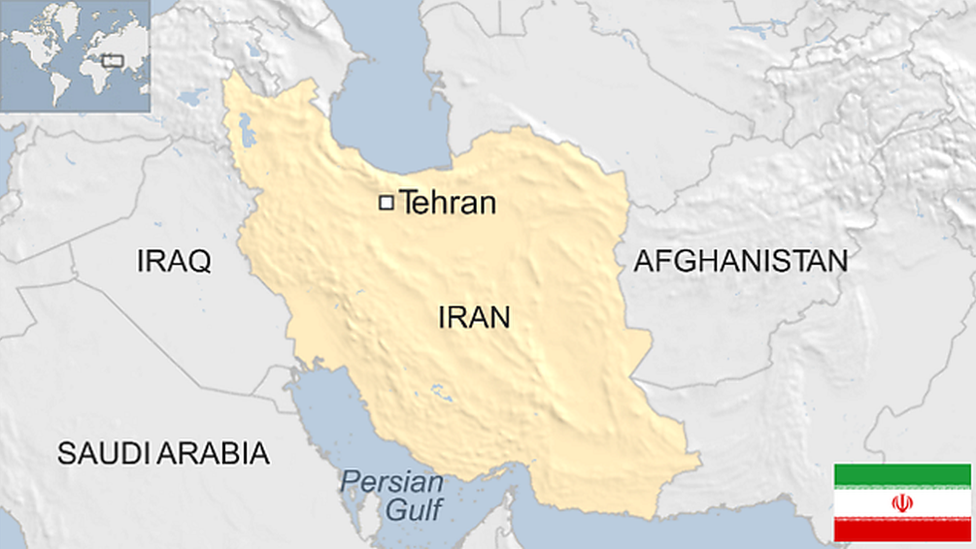Iran became an Islamic republic in 1979, when the monarchy was overthrown and clerics took political control under Ayatollah Khomeini.
The revolution ended the rule of the Shah, who had alienated powerful religious, political and popular forces with a program of modernization and Westernization, coupled with heavy repression of dissent.
Iran was one of the largest empires of the ancient world and has long maintained a distinct cultural identity by retaining its own language and adhering to the Shia interpretation of Islam.
Supreme Leader: Ayatollah Ali Khamenei
The Supreme Leader – the highest power in the country – appoints the heads of the judiciary, the military and the media. He also confirms the election of the president.
Ali Khamenei was appointed for life as successor to Ayatollah Khomeini in June 1989. He previously served two consecutive terms as president in the 1980s.
Chairman: Masoud Pezeshkian
Reformer Masoud Pezeshkian was elected president of Iran in July 2024, defeating his hardline conservative rival Saeed Jalili.
He won 53.3% of the more than 30 million votes, while Jalili polled 44.3% in the second round.
The second round came after no candidate secured a majority in the first round of elections, which saw a historically low turnout of 40%.
The elections were called after Iran’s previous president, Ebrahim Raisi, died in a helicopter crash in May, which also killed seven others.
Dr. Pezeshkian, a heart surgeon and member of Iran’s parliament, has been critical of Iran’s notorious morality police, causing a stir after promising “unity and cohesion” as well as an end to Iran’s “isolation” from the world.
He has also called for “constructive negotiations” with Western powers on an extension of the faltering 2015 nuclear deal, in which Iran agreed to curb its nuclear program in return for an easing of Western sanctions.
The president is the highest elected official and second in rank to the supreme leader. He is responsible for the day-to-day administration of the government and has significant influence over domestic policy and foreign affairs.
However, its powers are relatively limited, especially in the security field. The President’s Ministry of Interior directs the national police. However, its commander was appointed by the supreme leader and reports directly to him.
The same goes for the commander of the Islamic Revolutionary Guards Corps and the Basij.
The president’s powers can also be controlled by parliament, which introduces new laws.
In turn, the Guardian Council – which includes close allies of the supreme leader – is tasked with approving and vetoing new laws.
All broadcasts from Iranian territory are controlled by the state and reflect official ideology. A wider range of opinions can be found online and in the print press.
Iran is one of the most repressive countries in the world for journalists, says Reporters Without Borders.
Some important dates in Iran’s recent history:
1794 – Mohammad Khan Qajar seizes power and establishes the Qajar dynasty.
1921 – Military commander Reza Khan seizes power and is later crowned Reza Shah Pahlavi.
1941 – Britain and Russia occupied Iran during World War II.
1953 – A coup plotted by British and American intelligence services overthrows Prime Minister Mohammad Mosaddegh.
1979 – The Iranian revolution deposes the Shah.
1980-1988 – War between Iran and Iraq.
1989 – Ayatollah Khomeini, the supreme leader and founder of the Islamic Republic, dies and is replaced by Ayatollah Ali Khamenei.
1997 – The reformist Mohammad Khatami is elected president by a landslide.
2004 – The US views Iran’s nuclear program as a growing threat and calls for international sanctions.
2005 – Hardline Mahmoud Ahmadinejad is elected president.
2009 – Ahmadinejad is re-elected in a disputed election that sparks months of mass protests known as the ‘Green Movement’.
2013 – Moderate Hassan Rouhani elected president.
2015 – Iran and major world powers reach agreement over its controversial nuclear activities. Tehran agrees to halt its nuclear program in exchange for a partial lifting of sanctions.
2018 – The US withdraws from the 2015 international agreement on Iran’s nuclear program and imposes sanctions on Tehran.
2020 – Qasem Soleimani, head of the IRGC’s external branch known as the Quds Force and perhaps the most powerful figure in Iran after Ayatollah Khamenei, is assassinated by the US in Iraq.
2021 – Hardline Ebrahim Raisi is elected president.
2022 – Massive nationwide protests following the death in police custody of Mahsa Amini.
2024 – President Raisi dies in a helicopter crash, the reformist Masoud Pezeshkian is subsequently elected president.

